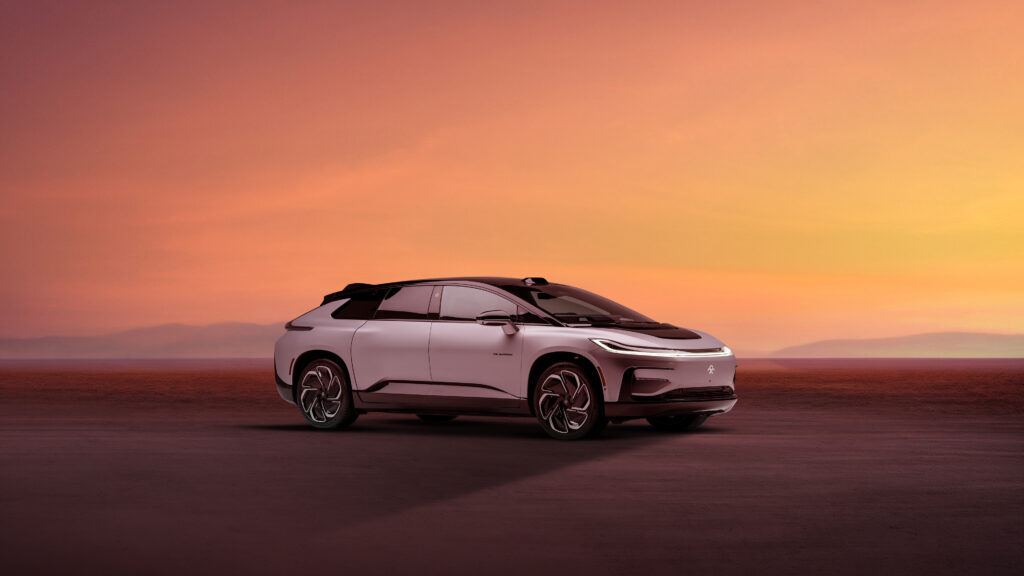Q325 results summary
Loss from operations was $206.8m in Q325 versus $25.2m in Q324, driven principally
by a non-cash asset impairment charge of $138.5m. This write-down reflects management’s
strategic pivot away from FF 91-related manufacturing assets towards FX Super One
production capabilities. Excluding this impairment, underlying operating losses of
$68.3m still exceeded the prior year by 171%, indicating elevated operational burn
rates.
For the nine-month period, operating losses reached $298.7m compared to $119.4m in
2024, a 151% increase. Revenue generation remained minimal at $407k for the nine months
versus $304k in the prior year, reflecting limited FF 91 deliveries and the pre-commercial
status of the FX platform. Q3 revenue totalled $37k versus $9k in Q324.
Net losses widened to $222.2m in Q3 from $77.7m in the prior year, though fair value
adjustments on financial instruments provided $31.3m of non-cash gains. The nine-month
net loss expanded to $357.1m from $234.6m, demonstrating the company’s continued cash
consumption trajectory.
Liquidity and capital structure
Cash and restricted cash of $62.9m at September 30 represents a meaningful improvement
from prior quarters, supported by $136m in financing commitments during Q3, of which
approximately $82m was received by quarter-end. Financing activities generated $135.8m
during the nine months, a 144% increase from $55.7m in 2024, providing critical operational
runway.
Operating cash outflow for the nine months totalled $79.2m, while total assets declined
to $314,109m from $425.4m at year-end 2024, primarily reflecting the asset impairment
charges.
The balance sheet structure reveals significant leverage, with total liabilities of
$357.6m including $71.5m in long-term notes payable and $45.6m in other long-term
financing obligations. Warrant and derivative liabilities totalling $44.2m create
potential dilution risks should equity markets improve.
Operational momentum and market validation
The FX Super One launch represents the company’s primary value catalyst, with over
11,000 non-binding pre-orders in the US and 200+ units in the UAE following the October
Dubai launch. These reservation levels, while encouraging, remain non-binding and
provide limited visibility on conversion rates or delivery timing. Management also
disclosed in its Q325 results that FFAI vehicles equipped with NACS charge points
in North America, Japan and South Korea will gain access to over 28,000 Tesla Superchargers.
Manufacturing progress includes trial production commencement at the Hanford facility
and completion of over half the Federal Motor Vehicle Safety Standards 201U test points.
The company finalised its US assembly plan and established FX Pars customer centres
across five states: California, New York, Massachusetts, Texas and Nevada, with expansion
planned for New Jersey, Florida and Washington.
The UAE launch as part of the ‘Third Pole’ strategy demonstrates international expansion
capabilities, with first deliveries planned for November 2025 at approximately $85k
pricing. This represents a premium positioning relative to established EV competitors
but aligns with the company’s luxury brand positioning.
FFAI also affirmed plans to introduce a series of models over the next five years,
covering four blue-ocean segments in the US market.
Strategic developments and risk factors
The $30m investment in Qualigen Therapeutics introduces portfolio diversification
through the ‘EAI + Crypto’ dual-flywheel strategy, though the strategic rationale
remains opaque given the company’s capital constraints. Founder YT Jia completed approximately
$560k in personal stock purchases as of 8 September 2025, under a Rule 10b5-1 plan,
signalling management confidence.
Management’s Q425 targets include completing safety assessments, ramping pre-production
and rolling the first pre-production FX Super One by year-end. However, execution
risks remain elevated given the company’s limited manufacturing track record and complex
regulatory approval processes.
The company successfully completed Nasdaq’s one-year compliance monitoring period
in September, returning to fully normal listed-company status. However, current cash
runway limitations suggest additional financing requirements within the next two to
three quarters, creating execution pressure on the FX Super One launch timeline and
commercial validation metrics.
Other newsflow
FFAI announced on 12 October that it had signed a deposit arrangement for 1,000 units
of its FX Super One with ZEVO (a peer-to-peer EV sharing platform in the US). The
agreement includes non-refundable deposits and non-binding pre-orders, and a non-refundable
deposit has already been received. The signing of the agreement demonstrates that
FX’s co-creation ecosystem online direct sales model has expanded into Texas, the
second-largest EV market in the US. It also represents another breakthrough in its
B2B2C sales model. FFAI will now look to operate through the car rental industry,
FX Partners programme, real estate brokerages and Middle East Communications Network
agencies, as well as entering the rapidly growing peer-to-peer car-sharing market.























